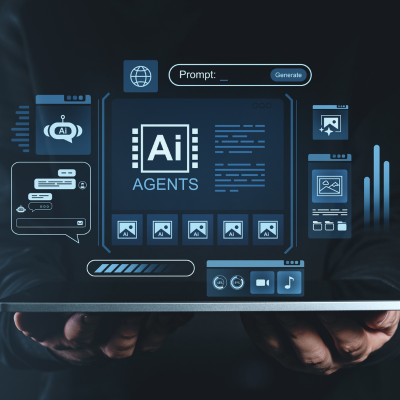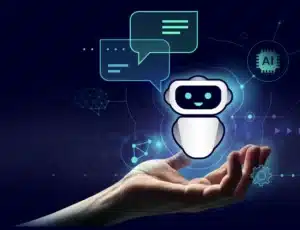Software observability has emerged as the essential evolution in application monitoring, enabling engineering teams to gain deep, real-time insights into increasingly complex and distributed systems. Unlike traditional monitoring that focuses on predefined metrics and alerts, software observability leverages rich telemetry data—logs, metrics, and traces—to provide a holistic understanding of system behavior. This empowers teams to proactively detect, diagnose, and resolve issues before they impact users, making it indispensable for cloud-native monitoring environments, distributed systems visibility, and performance engineering.
In this article, we trace the evolution of software observability, explore the latest tools and AI-powered trends, share advanced tactics for maximizing its benefits, and highlight its tangible business value through a detailed case study. We also introduce Amquest Education’s Software Engineering, Agentic AI and Generative AI course—an industry-leading program designed to equip professionals with future-ready skills in this transformative domain.
The Evolution of Software Observability: From Monitoring to Insight
Observability originates from control theory but has been profoundly reshaped by the complexities of modern software architectures—microservices, containerization, and serverless computing. Traditional application monitoring relies on static dashboards and alerts triggered by fixed thresholds, which often fail to detect the “unknown unknowns”—unexpected issues that arise in dynamic systems.
Software observability closes this gap by enabling teams to ask arbitrary questions about system behavior after deployment using comprehensive telemetry data sets. The three foundational pillars are:
- Metrics: Quantitative measurements such as CPU usage, request rates, and error counts.
- Logs: Time-stamped records—structured or unstructured—of system events.
- Traces: Distributed tracking of requests as they flow through microservices and infrastructure.
Together, these data types provide a 360-degree view of system health, allowing faster root cause analysis and continuous performance optimization.
Latest Features, Tools, and Trends in Software Observability
AI-Powered Observability Platforms
Modern observability platforms do more than aggregate data; they enrich telemetry with contextual metadata such as service names, deployment environments, and geographic locations. This metadata simplifies tracing issues across distributed systems. Critically, AI and machine learning have become integral, automating anomaly detection, root cause analysis, and even remediation workflows. These capabilities accelerate troubleshooting and reduce manual effort, enabling teams to focus on innovation rather than firefighting.
Cloud-Native and Distributed Systems Visibility
Cloud-native architectures demand observability solutions that adapt to dynamic environments with frequent scaling and ephemeral services. Key capabilities include:
- Dependency mapping: Visualizing microservice interactions to identify cascading failures quickly.
- Capacity planning: Using historical telemetry to optimize resource utilization and reduce costs.
- Unified monitoring: Correlating frontend and backend telemetry to enhance end-user experience.
By providing real-time visibility into these complex environments, observability platforms empower performance engineering and operational resilience.
Advanced Tactics for Software Observability Success
To unlock the full potential of software observability, organizations should adopt these advanced tactics:
- Comprehensive instrumentation: Ensure all applications and infrastructure components emit rich telemetry, including custom business metrics tailored to organizational goals.
- Distributed tracing pipelines: Implement end-to-end tracing to follow request journeys, crucial for diagnosing bottlenecks in microservices.
- Data correlation: Combine logs, metrics, traces, and events to create a unified view that accelerates mean time to resolution (MTTR).
- Automated alerting and remediation: Leverage AI-driven anomaly detection integrated with automated workflows to reduce manual intervention and downtime.
- Cross-team collaboration: Use observability data as a single source of truth to align DevOps, SRE, security, and business teams around shared operational insights.
Embedding observability into organizational culture fosters innovation, continuous learning, and improved system reliability.
The Cultural Dimension: Storytelling and Community in Observability
Observability transcends technology—it is a cultural enabler. Sharing incident postmortems, system behavior stories, and lessons learned builds collective knowledge that drives continuous improvement. Communities of practice around observability encourage innovation and best practice adoption. Amquest Mumbai supports such communities through AI-powered learning, blending theory with hands-on projects and internships. This approach accelerates mastery, bridging academic knowledge and real-world application, essential for success in observability roles.
Measuring Business Impact: Analytics and Insights
Effective software observability delivers measurable business outcomes:
- Reduced downtime: Faster detection and resolution minimize user-facing incidents.
- Improved performance: Data-driven tuning enhances application responsiveness and scalability.
- Cost savings: Optimized resource allocation lowers operational expenses.
- Enhanced developer velocity: Simplified troubleshooting frees engineers to focus on innovation.
Tracking KPIs such as MTTR, system uptime, error rates, and user experience metrics quantifies the ROI of observability investments.
Case Study: Netflix’s Observability Journey
Netflix, a pioneer in large-scale distributed systems, faced the challenge of ensuring uninterrupted streaming performance worldwide. Their observability strategy includes:
- Comprehensive telemetry: Collecting metrics, logs, and traces across thousands of microservices.
- Automated anomaly detection: Using machine learning to identify and predict failures proactively.
- Real-time dependency mapping: Visualizing service interactions to isolate root causes rapidly.
- Developer empowerment: Providing rich dashboards and self-service tools to accelerate troubleshooting.
This approach has significantly reduced service outages and enhanced user experience, supporting billions of streaming hours with high availability and performance.
Actionable Tips for Practitioners and Leaders
- Define clear goals: Establish what you want to measure and improve with software observability.
- Invest in training: Enroll in courses like the Software Engineering, Agentic AI and Generative AI course, which combines AI-led modules with hands-on projects and internships in Mumbai and online.
- Adopt cloud-native observability tools: Select platforms that offer scalability, flexibility, and AI integration.
- Foster collaboration: Break down silos between DevOps, SRE, and security teams using observability data as a shared resource.
- Continuously refine: Use insights to optimize performance, strengthen security, and enhance end-user experience.
Why Choose Amquest for Mastering Software Observability?
Amquest stands out with its AI-powered learning modules that integrate the latest agentic AI and generative AI techniques, delivering a future-ready skill set. The program emphasizes hands-on experience through internships facilitated by strong industry partnerships, ensuring learners gain real-world exposure. Experienced faculty with deep industry backgrounds guide students through complex concepts and practical challenges. Based in Mumbai with national online availability, Amquest makes advanced education accessible across India. The curriculum uniquely combines software engineering fundamentals with modern observability practices, positioning graduates as leaders in DevOps monitoring and cloud-native observability.
Conclusion
Software observability represents the next evolution in application monitoring, vital for managing the intricacies of modern distributed systems. By providing deep, real-time insights through comprehensive telemetry data, it enables faster troubleshooting, performance optimization, and superior user experiences. For professionals aiming to lead in this transformative field, the Software Engineering, Agentic AI and Generative AI course offers the most comprehensive, AI-driven, and industry-connected pathway to mastery. Explore this course to future-proof your career and confidently steer your organization’s observability initiatives.
FAQs
Q1: What is the difference between software observability and application monitoring?
Software observability extends beyond traditional monitoring by enabling teams to understand not only what is happening but why. It integrates logs, metrics, and traces to provide a real-time, holistic view of system behavior, including unexpected issues.
Q2: How does software observability improve distributed systems visibility?
Observability platforms map dependencies and interactions across microservices, helping teams visualize complex architectures and troubleshoot more effectively.
Q3: What role do logs and tracing play in software observability?
Logs provide detailed event records, while tracing tracks request flows across services. Together with metrics, they form the core telemetry data analyzed for comprehensive insights.
Q4: How can observability tools support performance engineering?
By enabling real-time anomaly detection and historical data analysis, observability helps identify bottlenecks and optimize resource allocation for better system performance.
Q5: What are best practices for DevOps monitoring using observability?
Best practices include comprehensive instrumentation, correlating diverse telemetry data, automating alerts, and fostering cross-team collaboration through unified observability platforms.
Q6: Why is AI integration important in modern observability?
AI and machine learning automate anomaly detection, root cause analysis, and remediation, increasing operational efficiency and reducing manual troubleshooting effort.










